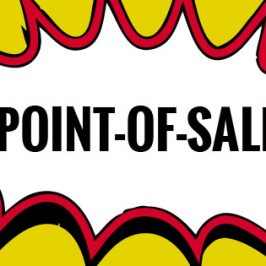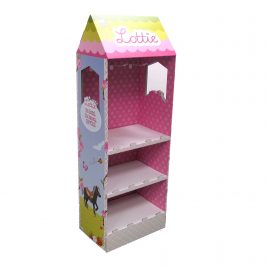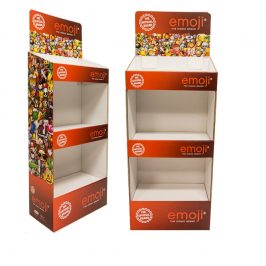[easy-image-collage id=512]
You’re waiting in line at the supermarket—and, as you’re not particularly interested in staring at the back of the customer in front of you, you glance around the line.
The display of candy bars within immediate reach reminds you that you’re a little hungry, so you grab one (it’s on sale). Oh, and that magazine looks interesting. You’re already reading an article when you get to the cash register, where the teller asks if you want to donate $1 to a charity; and doing so, you write your name on a little heart placard that gets placed on the wall with a hundred other hearts from other donators. Finally, you complete your purchase(s) and get your receipt—with several extra items you hadn’t expected to buy.
What is point of sale marketing?
Point of sale marketing refers to all efforts that increase sales at the point the purchase is actually made. Primarily this revolves around a cash register (although a point of purchase for a business might be a meeting table, or an Internet page), and is a staple of retail and restaurant environments.
The most common method of point of sale marketing is the merchandise display, while other methods include the use of signage, receipts, and suggestive selling by the retailer at the POS.
Who employs point-of-sale marketing?
Restaurants and retailers frequently use point of sale marketing tactics to encourage customers to make last-minute purchases. However, because retailers resell other business’ products, point of sale marketing is significant to every company that sells items located at/near a retailer’s POS.
- Grocery stores commonly place merchandise shelving in between each available register, featuring items such as magazines, candy, gum, and batteries. Sodas are often displayed in a small refrigeration unit at the end of these displays. Items near the POS frequently move at one-and-a-half to three times as fast as the same product on a shelf elsewhere in the store, and some items in high-traffic supermarkets have been reported to sell as much as 64 times faster.
- Gas stations similarly line products at their register counter. Here, energy vitamins and beef jerky are items added to those also commonly sold at grocery store registers.
- Fast-food restaurants commonly display desserts and gift cards at their POS. Dine-in restaurants in which customers pay at the counter instead of through their server (such as Denny’s and Sizzler) may also feature items here.
- Retail businesses, including hardware stores, auto parts stores, hobby stores, and others place their own low-ticket items around their checkout locations.
- Tobacco companies focus much of their advertising around the point of sale; although their displays and advertisements are subject to more legal regulations than other products.
- Brands can purchase display space at a retailer’s POS, or even use the POS system software to promote their product. For example, Hellman’s designed a program that printed recipes featuring Hellman’s mayonnaise (and other products purchased at the same time) on customers’ receipts, which led to an increase in sales as customers put their mayonnaise to further use.
- Starbucks is a particularly good example of POS marketing, insofar as they have low-ticket merchandise on display there, a POS software that facilitates suggestive selling, and a receipt program that encourages repeat business.
- Non-profit organizations and causes can sell paper plaques (also called pinups, icons, or mobiles) at the point of sale, which visually represent a donation made, and offer the customer a social reward for donating (such as putting the donator’s name on display).







Leave a Reply